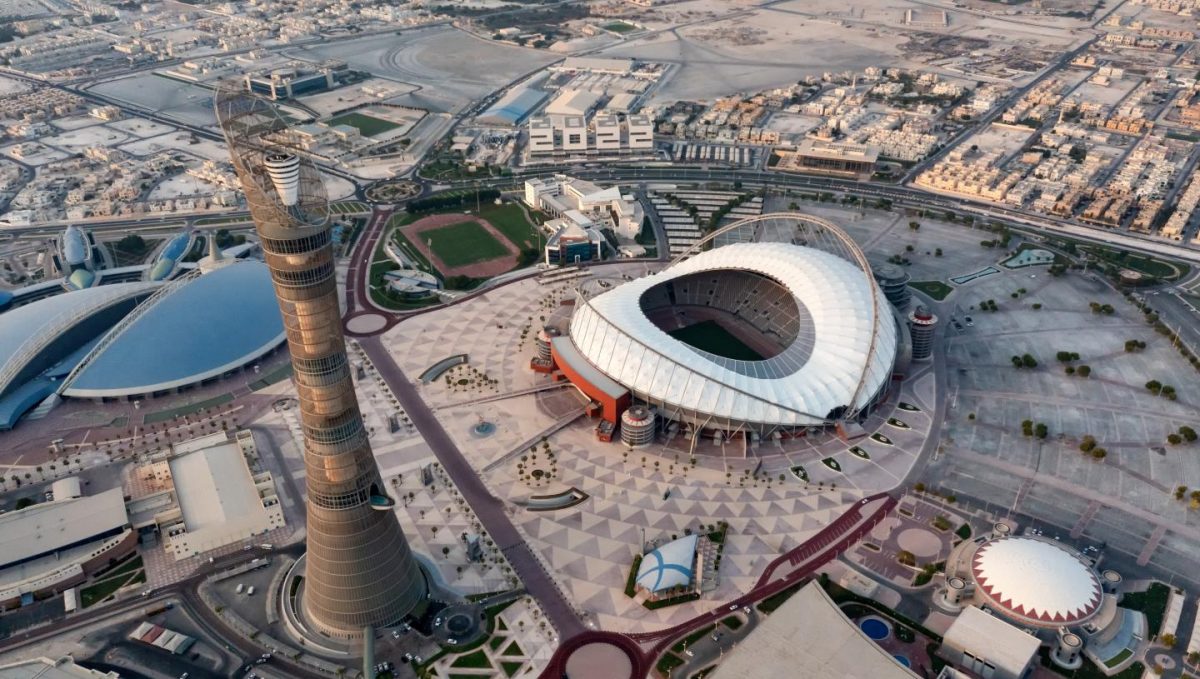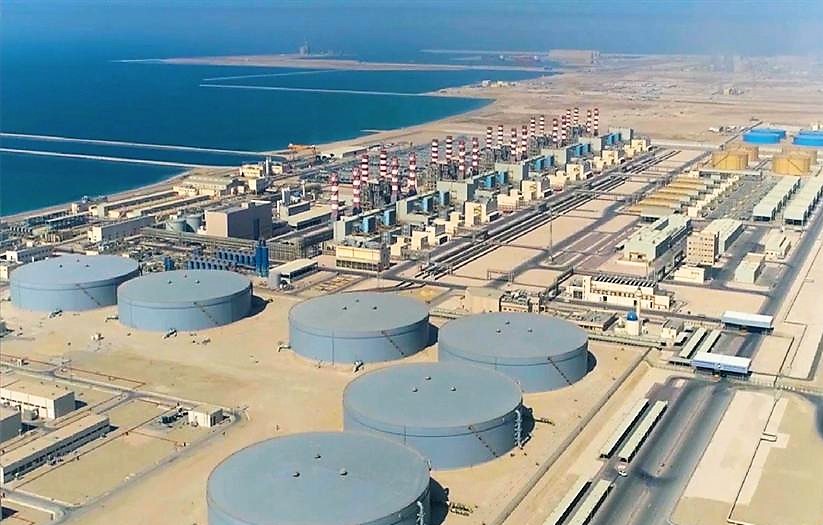
When Qatar won the bid to host the 22nd FIFA World Cup™ in 2010 ahead of bids from heavyweights like the United States, South Korea, Japan, and Australia, many wondered if this beautiful yet very small country would be able to take on the challenge of hosting the greatest sporting event on the planet and will Qatar have everything ready on time to welcome over 1.2 million visitors from over 200 countries to a nation with a population of about 1.6 million people at the time.
Armed with what many considered a blank check and a vision, the State of Qatar, and The Supreme Committee for Delivery & Legacy (SC) in charge of delivering the event headed by Hassan Al-Thawadi have delivered, and indeed delivered what has started as a truly magnificent event that has welcomed the world to the first FIFA World Cup post-pandemic and the first to be hosted in the Arab World.
"I have never seen a host country being prepared so far in advance. All the stadiums are finished. The infrastructures, in terms of hotels and roads, are being completed. Qatar is ready, FIFA is ready... the world is ready. And, after some difficult times with the pandemic, we must come together again", said Gianni Infantino, FIFA's president.
The build-up to this event has come with more than its fair share of praise and critics however this feature will focus on this event’s legacy in relation to the investment in infrastructure and the socio-economic impact of the event to the region.
Qatar National Vision 2030
One cannot tell the story of the infrastructure developed to host a successful FIFA World Cup without understanding the founding vision on which this event is built. In 2008 Qatar’s General Secretariat for Development Planning set presented the National Vision 2030 which aims for Qatar to become an advanced society capable of sustaining its development and providing a high standard of living for its people for generations to come. Qatar's National Vision defines the country's long-term goals and serves as a framework for developing national strategies and implementation plans.
The vision addresses 5 major challenging areas including
1. Modernisation and preservation of traditions
2. The needs of the current generation and of future generations
3. Managed growth and uncontrolled expansion
4. The size and quality of the expatriate labour force and the selected path of development
5. Economic growth, social development, and environmental management
This vision seeks balance, a long-term sustainable development without compromising the virtues on which the nation was born. A long-term plan that ensures that every action is considered against its four pillars of economic, social, human, and environmental development. It is on this foundation that every direct and supporting infrastructure built for the FIFA World Cup Qatar 2022™ was developed.
Scoring Infrastructure Goals
Qatar is rumored to have invested between 200-300 billion USD in its realization of the event however only a small piece of this pie was actually spent on the world cup itself, whilst the majority is budgeted towards the 2030 National Vision program that started a couple of years before Qatar won the bid to host the world cup.
The Qatari government built eight stadiums in total to receive the sports event. Six of these stadiums are entirely new; the other two were built and remodeled on top of old infrastructure. The figures available for these constructions estimate an investment of around 6.5 Billion USD.
These stadiums include Al Bayt Stadium (Al Khor Stadium) which seats 68,895 fans, Khalifa International Stadium (45,000 Capacity), Al Thumama Stadium, Ahmed Bin Ali Stadium (45,000 Capacity), Lusail Stadium (88,000 Capacity), and Stadium 974 has a capacity of 44,000 and it is named after the country’s dial code and the number of containers used to build it. The others are Education City Stadium (44,667 Capacity) and Al Janoub Stadium (44,325 Capacity)
After the event, half of the stadium will turn into a five-star hotel, stadium 974 would be dismantled and shipped to another country and whilst others will have their capacity reduced.
Supporting Infrastructure
Most of the billions spent by the Qatari government went to non-sporting infrastructure that will help manage the challenge of the expected influx of foreign tourists coming to witness the event. According to official government estimates, the country expects to receive more than 1.5 million visitors, which is equal to 40% of its total population. These projects serve future visitors and the growing population of people who call Qatar home.
“Our goal was to build venues that local communities would use. Before we broke ground, we consulted communities to ensure their needs were implemented at the design phase,” said Engineer Ghanim Al Kuwari, deputy director general, of technical services, Supreme Committee for Delivery & Legacy.
This first project to be experienced by visitors is the Hamad International Airport (HIA); a new world-class aviation hub built to accommodate 53 Million passengers annually and designed to resemble the gentle waves of the gulf sea. It is currently the country's central air station, designed to accommodate 63 contact gates, 16 lounges, 30 cafés, and 70 retail stores and it also serves as the base of operations for Qatar Airways
The second is the Doha Metro which is without a doubt one of the most advanced rail transit systems in the world and it is expected to carry 500,000 daily passengers during the peaks of the World Cup. The metro rail project consists of a 76-kilometer network with three lines and 37 stations, and it is part of a larger railway network that includes five modern and flexible railway systems interconnected across the Persian Gulf.
Ashghal, the body in charge of governing the design, construction, delivery, and maintenance of all expressways and major roads in Qatar, has invested billions of dollars in the modernization and development of Doha Expressway System. These projects include the completed Lusail Expressway, Dukhan Highway Central, Alkhor Road Project, Salwa Road Phase 2 and other ongoing projects including the New Orbital Highway, Dukhan Highway East, Sabah Al Ahmad Corridor, Duhail Interchange Upgrade Project just to mention a few.
Furthermore, the Finnish architectural firm Sigge Architect, together with the real estate company Admares, a leader in the construction of unconventional buildings, began the development of 16 floating hotels on Qetaifan Island North. The latter is close to the Lusail International Stadium, where the opening and final games will be held.
"The World Cup serves as a motor to boost and accelerate many initiatives the government has already embraced, already planned for, whether in urban development or economic diversification," Al Thawadi explains.
Qatar's telecommunications infrastructure has also been upgraded. The responsible ministry has collaborated with telecommunications service providers and contractors to develop a national plan that will aid the country's efforts in meeting its objectives and providing the best services to participants and fans. Microlink, a leading system integrator, has been tasked with improving communication and the quality of existing systems by offering telecommunication solutions in the area of 5G Smart Poles, Inbuilding Solutions, as well as Fixed and Mobile Base Stations.
Human Infrastructure
In a country with one of the highest per capita in the world and where only 14% of it inhabitance is native Qatari, Qatar has been home to a very diverse population of expatriates from across the world. Professionals from all works of life have successfully lived and thrived in the oil and gas-rich state.
And since construction began in 2010 for the World Cup there has been enormous growth in other types of migrant workers who have come to work predominantly in the construction sector and more recently in the tourism sector in hotel management, luxury catering, facility management, and preparing for the World Cup.
Qatar has faced a wave of criticism around human rights and how its estimated 2.1 million migrant labour workers are treated during the construction of the World Cup infrastructure. The Qatari government and its partners have since implemented policies that are ensuring improved health and safety standards within the country’s building codes, abolishment of the Kafala system, better living conditions, and improved compensation for the migrant workers as well.
The locals have also not been left out either, the government has designed a Qatarization initiative to increase the number of Qatari citizens employed in the public and private sectors. And, with the World Cup and its accompanying projects, there has been a significant acceleration in this program aimed at attracting, developing, motivating, and retaining Qataris across the board.
Economic Impact
Qatar is a very wealthy country that earns the majority of its income from its massive oil and gas assets. As part of its Vision 2030, the goal is to future-proof its economy by divesting and becoming more knowledge-based. This begins with developing the infrastructure that serves as the foundation, growth in the construction sector, and then tapping into the fast-growing Middle East tourism sector. This is already visible in the reduction of its oil and gas assets' contribution to GDP from 53% in 2010 to 39% in 2020.
The Middle East travel and tourism sector for example is expected to generate $246 billion in 2022 and it is projected to at least double that amount by 2030. Tourism has become a strategic axis for the Gulf Cooperation Council (CCG) countries, especially considering the success of Dubai in this sector. This is also why the region has quickly become the world's fastest-growing sports tourism destination. According to the World Trade Organization, the sector alone is worth an estimated $600 billion and has become home to a set of very robust football leagues, horse racing, Formula One, the UFC, big-ticket boxing, and now the most prestigious sporting event in the world of sport the FIFA World cup hosted in the beautiful state of Qatar.
The investment into tourism infrastructure in Qatar has not only come from local investors and the government, there has also been a steady and growing flow of foreign direct investment into Qatar, thanks to a stable currency attached to the U.S. dollar, the country's political stability, high-level infrastructure, and competitive corporate tax rates (10%).
"We anticipate that the contribution to the economy would be around $20 billion," said Hassan Al Thawadi. Al Thawadi is the Secretary General of the Supreme Committee for Delivery & Legacy, responsible for building the infrastructure behind the 2022 World Cup. This figure represented 11% of the country's gross domestic product in 2019. Regarding new jobs in Qatar, there was a 7 percent increase in the three months before September 30, compared with the previous quarter.
Qatar's investment in football goes beyond its activities over the last 12 years in the preparation for the World Cup. Qatar Sports Investments (QSI), which owns Paris Saint Germain (PSG) football club, recently acquired 21% of the shares of Sporting Braga, currently one of Portugal's top 4. The company seeks to become a multi-club group and has also shown in England's Premier League. The purchase of clubs in Europe from Middle Eastern countries could exceed 1,500 million dollars.
"The last 12 years have been very intense for economic development, stimulated and accelerated by the World Cup. Also, by developing this mega-master plan since 2008, we are contemplating the benefits of it in the next 20 years", declares Nasser Al-Kather, Qatar World Cup CEO. All is ready for what promises to be a historic event in the region, which will undoubtedly give a lucrative boost to the Qatari economy for many years to come.
Environmental impact
Qatar 2022 will be the most compact FIFA World Cup ever, with all the stadiums and various FIFA World Cup venues close to each other. This will significantly reduce the carbon emissions caused by transporting the teams, officials, and fans during the tournament.
Ticket holders and others with the Qatar 2022 FIFA World Cup Fan-ID will be able to travel free of charge on all public transport in Qatar during the tournament. The latter will also reduce the reliance on individual travel and the overall carbon emissions of the championship.
Now, let's mention some additional data regarding the matter and the importance of taking measures. Did you know that a stadium in its maximum capacity can consume up to 8 million kilowatts of electricity, equal to the energy use of 2,500 families? In addition, each spectator in a game can generate between 1.82 and 15.01 pounds of garbage, totaling nearly 750 million tons of waste per game. To ease the impact of these figures, several important initiatives, including renewable energy solutions, reduced water consumption at operational stadiums and sustainable landscaping have been implemented.
By 2013, FIFA had proposed the Green Goals project to create and organize green sports events. The International Olympic Committee, on the other hand, also set the goal of aligning sporting events with the UN's sustainable development goals. Currently, one of the essential criteria to be able to host a sporting event is sustainability, thus seeking to have the least possible environmental impact.
Partners and Sponsors
Football or Soccer as it is called in North America is unarguably the most popular sport on the planet with roughly 3.5 billion fans worldwide and 250 million professional players at different levels across 200 countries around the world. The last World Cup which was hosted by Russia was watched by a record 3.5 Billion people across the world and the Qatar 2022 is projected by FIFA to be watched by 5 Billion people across the world, to this end you can understand why global, regional and local brands are lining up to align their brands with this event.
With this level of attention, the World Cup is not just a major source of potential economic development for the host country but also for FIFA. The entity projects revenues of 7.5 billion dollars from this event alone; this is record-breaking in contrast to the 2018 World Cup in Russia which had total revenue of $5.2 billion.
The companies behind the curtain prepared thoroughly for the influential event, whether through sponsorships (World Cup 2022 Partners and FIFA Partners), broadcasting rights, sales of sportswear, or ticket office. Some renowned sponsors are McDonald's, Budweiser, Adidas, Coca-Cola, Visa, Wanda Group, Hyundai, Kia, and the recently announced Nubank.
Other big-ticket brands include Qatar Airways, QatarEnergy, Crypto.com, Hisense, Vivo, Mengniu, Byju’s, and in most countries local brands have tapped into the spirit of the season with Brand alignment that allows them to use the name of the event to promote their products.
There is no certainty about how much the contribution of companies and sports brands will be in Qatar. However, their investment in preparations for the event proves that some see Qatar as a long-term partner.
The Legacy
The legacy of this event is yet to be written, however, the organizers and the State of Qatar are hoping for a positive one on and off the field of play. This journey which started years before Qatar won the bid to host the world should be remembered not just for hosting the greatest footballing event that welcomed all works of life, united the Middle East, and featured global superstars like Mbape, Ronaldo, and Messi, but also for showcasing Qatar's rich culture, sustainable infrastructure, expanding labor reforms, and the business opportunities available in the State of Qatar.
HE Hassan al-Thawadi puts it best in a recent interview stating “From day one, a legacy was at the forefront of our plans. Right from the bidding stage, every single project, every single penny spent in terms of infrastructure and other things was designed with legacy in mind,”
On the 18th of December, a new World Champion is likely to be crowned, and as the curtain falls on the world's greatest event and the world returns home, Qatar's historic journey toward achieving its vision of sustainable infrastructure development will continue.













